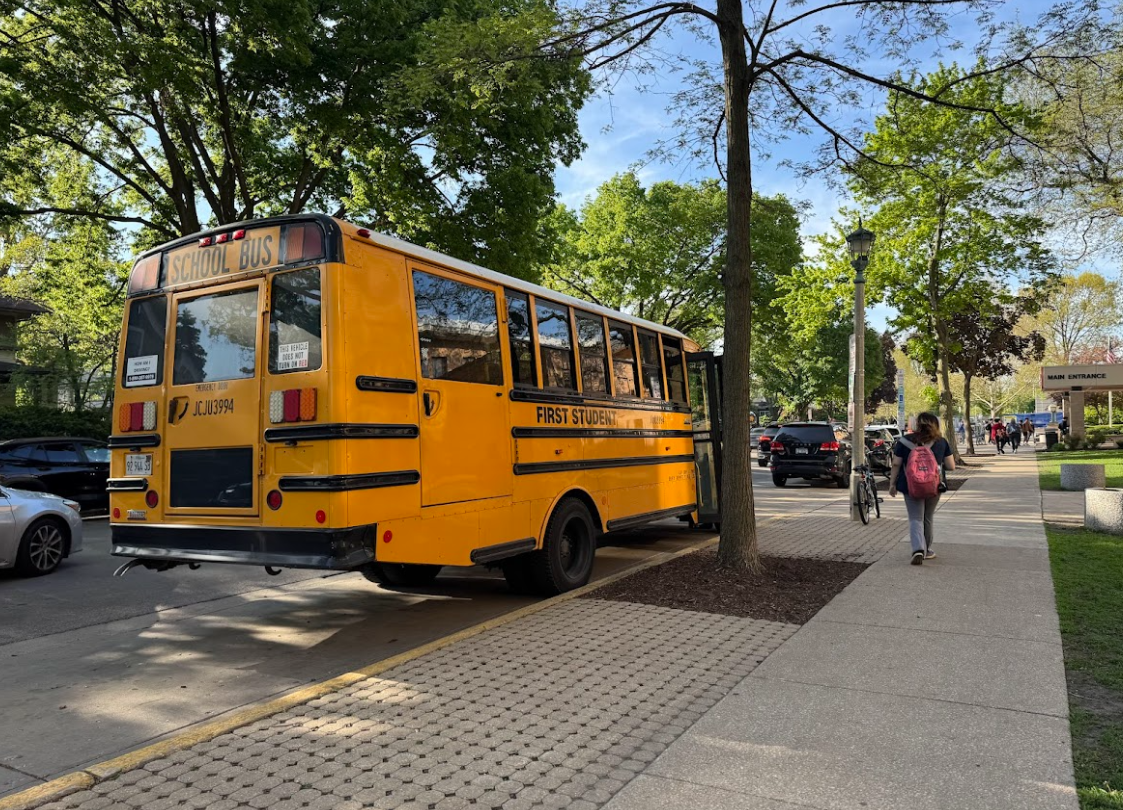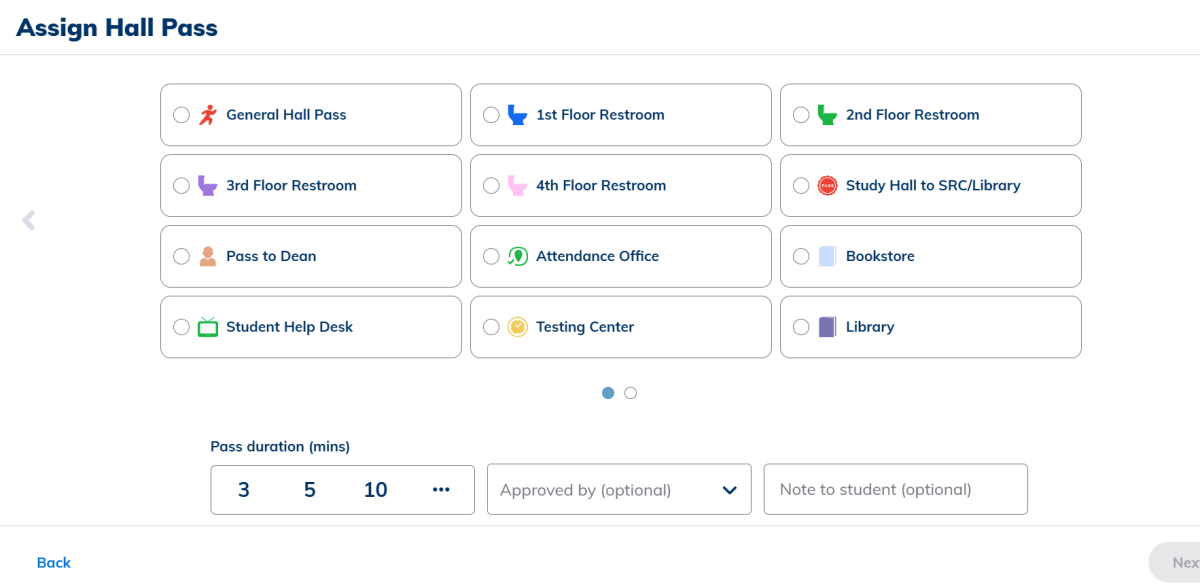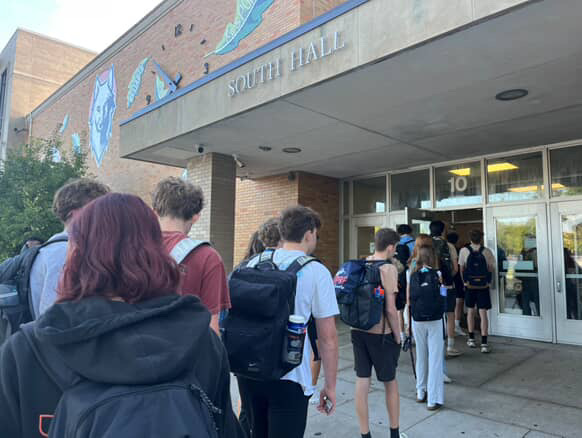As the special education students descended the steps of the bus and approached Door 5 of Oak Park and River Forest High School, all were welcomed by friendly staff members who called out their names like they were the world’s biggest superstars.
“Anna Banana’s in the house,” bellowed Patricia Kremidas-Lumbreraz, a teacher’s aide, as a student entered the building. Kremidas-Lumbrebaz greeted each student with a warm smile across her face, as she helped make sure that the students safely entered the building, where they were met by their one-on-one aides.
Their one-on-one aides then made sure that the students dropped off their bags at their lockers and entered their classrooms to ensure a successful school day.
Special education across America has received a new wave of attention as the Trump administration has sought to reshape the federal government’s role in education through mass layoffs at the Department of Education and an executive order on March 20 that called for the Secretary of the Department of Education, Linda McMahon, to “take all necessary steps to facilitate the closure of the Department of Education.” Special education services will be transferred to the Department of Health and Human Services, the administration also announced, although no steps have been taken to implement this change.
The federal government’s power over education is limited. Public education is largely funded by the states, and Congress must vote to shutter the Department of Education. However, among other programs, the federal government helps states fund special education through the Individuals with Disabilities Education Act (IDEA).
IDEA is a law that is meant to ensure that kids with special needs are able to receive a free, appropriate public education. Through IDEA, grants are distributed out to the states through a series of formulas. States then administer these grants to local education agencies (LEAs), where the funds can be used in restricted ways to support students with disabilities.
Some special education advocates have proclaimed their fears about how changes to the Department of Education will negatively affect students in special education by potentially removing oversight of states and local school districts. However, the Trump administration has repeatedly denied any claims that changes to the Department of Education will affect students with disabilities.
“Closing the Department of Education does not mean cutting off funds for those who depend on them – we will continue to support…students with special needs,” Education Secretary McMahon declared in a statement following Trump’s executive order announcing the intention to close the Department of Education.
OPRF mostly funds the school through local taxes, with only about 2% of the budget funded by federal sources. Most of the money that OPRF receives from the federal government is through IDEA. In fiscal year 2025, OPRF received $1,496,000 from the IDEA grant, out of $2,486,855 in total from federal sources of funding. Of that total, $560,000 came from the IDEA Room and Board grant.
This grant is for “students who have an IEP and are placed at a school off campus. There is a percentage of expenses that we get reimbursed for through IDEA” for this placement, said OPRF’s Director of Finance, Brian Imhoff.
The IDEA Flow Through grant accounts for $936,000 of the total IDEA funding that OPRF receives. It is used for “paraprofessional staff positions” in areas such as social work, occupational therapy, nursing and speech therapy for students with individual education programs (IEPs) as well as “professional development so our special education staff members can do ongoing training in their field,” said Imhoff.
In proportion to OPRF’s total budget of approximately $91 million, the amount of federal money is miniscule. Yet Imhoff emphasized that the funding is important, as “it helps those students that are most in need.”
Uncertainty swirls around the future of IDEA, as changes rapidly take place. However, IDEA seems to be unaffected for now as the Department of Education’s offices that focus on special education have been hit less hard by recent layoffs.
The Office of Special Education Programs (OSEP) seemingly lost no employees in the most recent layoffs that resulted in the termination of 1,300 employees out of the 4,133 original employees. OSEP is responsible for ensuring that states comply to the provisions of IDEA and administers the IDEA grants.
Some employees were cut from the Office of Special Education and Rehabilitative Services (OSERS), which provides support to states in subjects pertaining to special education, vocational rehabilitation, and research, although an exact number cannot be confirmed.
Furthermore, IDEA is a law funded and passed by Congress that has received widespread bipartisan support throughout its history. There has been no indication that this support will be impacted.
However, amid rapid changes to federal agencies and services, worries still abound over what might or will happen in the future in regards to funding for IDEA. Yet, OPRF special education officials are staying calm and sticking to the status quo as they plan the budget for the upcoming school year.
“We’re going day by day,” said Andrea Neuman, the interim director of special education at OPRF. “We are planning as if it’s going to continue like every single year.”







